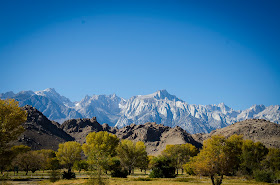"It doesn't matter how many times you leave, it will always hurt to come back and remember what you once had and who you once were. Then it will hurt just as much to leave again, and so it goes over and over again. Once you've started to leave, you will run your whole life."
-Charlotte Eriksson
The wayfærer wanders, but it is neither towards nor away from anywhere that lies at the end of the path. The wanderer finds destination along an unplanned road, some place which satisfies the longing of a heart without a home, however long it stays. There is a journey, but that journey must also come to an end. To the wayfærer, however, it is the passage itself which becomes the destination, and only in the depths of foreign sight and sensation, the thrill of insecurity and strangeness, the lingering question of what really waits just beyond your sight, will there be something to fill in the holes which have been slowly worn away.
Entrenched in the comfort and routine of society, it is dangerously easy to forget how wild and unforgiving the world was. Of what lies out there, waiting to be seen, to be explored, to be experienced. By living off of what you can carry on your back, surviving by instinct and endurance, relying upon your own ability to solve problems, a great deal of that unbidden life returns. Too often, it feels as though the advances we make are merely the illusion of progress hiding something darker. Now and again, the whisper becomes a howl, and there is no choice but to remember what lies beyond the shrinking boundaries of what our personal world has become.
When you need to break through a frozen waterfall with an axe to find water, or hike by the light of the moon across 11,000 feet of elevation and 100 degree temperature swings, modern living suddenly finds a new appreciation. Too often I hear someone proclaim, however thinly veiled behind jest, that it is madness to search out what awaits us in the wilderness. To many, there is no appeal, no desire, no willingness to tolerate the burden of leaving behind the life that has been built around us. Yet to them, I question what it truly means to live. We have come to a time where more is accessable, at any moment, than any other period in history. And yet still we experience from a distance, choosing the parts which are convenient and leaving behind all that makes it real. Without hardship, all that which is beautiful in the world has lost its meaning.
I was, looking back, chasing after that sensation awakened by the finality of true isolation. Atop the peaks, the world lay beneath me with a perspective I have never known. Whether I embarked with that purpose, I instead found another, one which evades even the most relentless pursuit and is often found in search of something else.
Enshrouded by the endless breaks of rock and ice, ridgelines standing thousands of feet around you as impassable as those we struggle to leave behind, there comes a quiet over the land. Echoes of the builders linger, their work remaining long after their hands depart. With the onset of winter, in areas the snow covered over the trail so heavily that the only place to step was an inch from the sheer face of a cliff plunging half a mile down. Alone, you must be ready to face that which you can never prepare for. It is that sensation which cannot be confined to words, an opening to a doorway that, once ajar, cannot be closed again.
It is not that I found myself simply leaving something behind, nor that I was seeking out something in its stead. Rather, there upon the heights I was looking for the sort of transformation that comes about by its own right, that cannot be forced or demanded or stolen out of the quiet life.
Too often, we permit our work to define our identity rather than affording our identity the opportunity to define our work. Our labours become our nature rather than our nature shaping what we must overcome. Whoever we are, we are all in pursuit of something. For the wayfærer, it is seeking out the road itself. Towards no destination beyond the changing face of what lies around us. To wander into those far corners of the world yet leave them before the sense of wonder which brought us there is lost.
A better burden
may no man bear
For wanderings wide than wisdom;
It is better than wealth
on unknown ways,
And in grief a refuge it gives.
-The Hávamál



















































